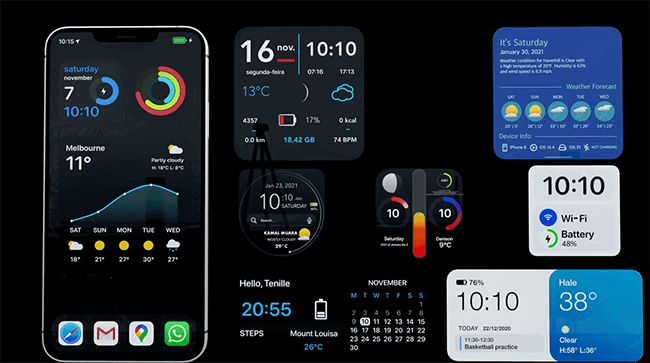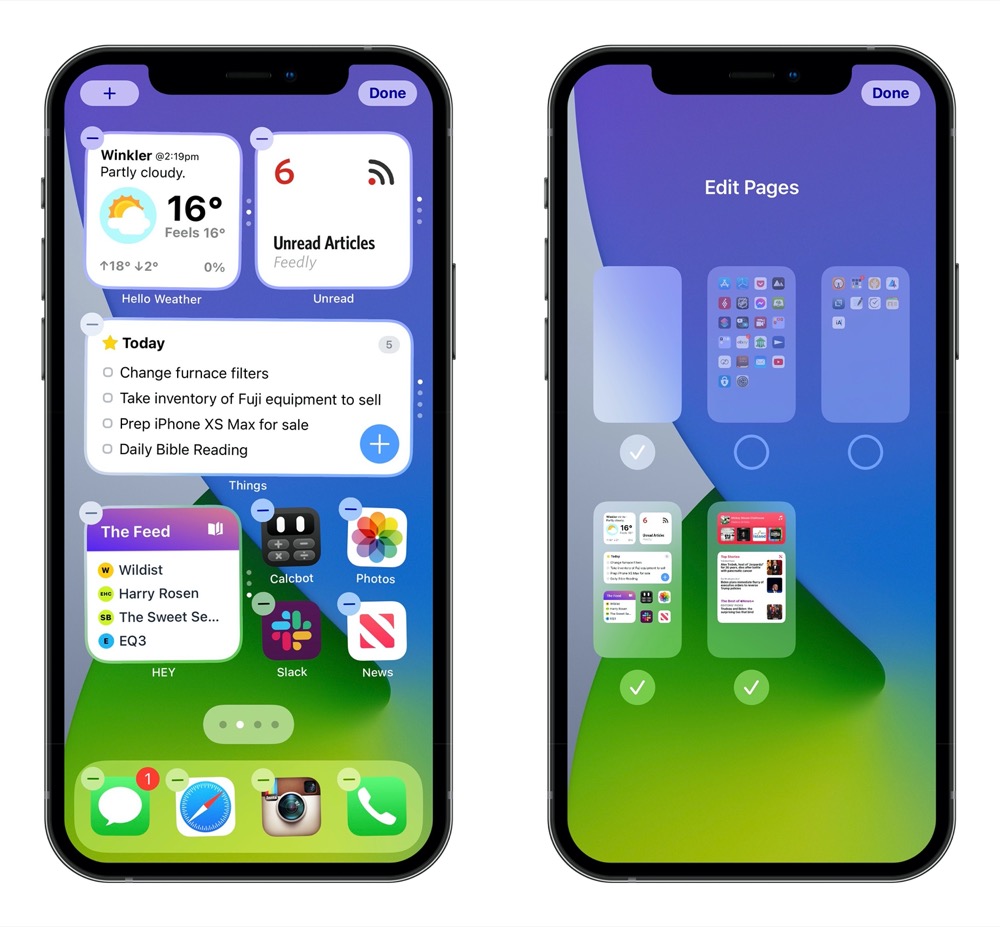iPhone widget settings
iPhone widget settings {Add widget on iPhone} The ability to edit the widget on the iPhone home screen is a new feature that was added to this operating system in iOS 14. Of course, this feature was already available for Android users. Although in iOS 13, using widgets is not as easy and convenient as the new version of this operating system, but they can be used as a useful tool.
What is a widget?
Widgets are applications that are placed as a module of the main program on the screen of your phone or tablet. In fact, users can view information from that application using the widget without opening the application.
iOS widgets come in three sizes, which we call small, medium, and large. They occupy the space of 4 apps, 8 apps (horizontal rectangles) and 16 apps (big squares that take up half of your screen), respectively. These widgets use all the extra space to display useful information.
Probably the easiest thing an iPhone widget can do for you is to display the weather. The small iOS Weather widget displays the current temperature, today’s high and low forecast, and a thumbnail (cloudy, rainy or sunny) on the screen!
Some programs offer different types of widgets. For example, Wikipedia’s “Image of the Day” shows you a glimpse of “Today in History” and a summary of today’s most read articles. However, note that not every widget offers every size. Google only provides small (for quick search) and medium (incognito mode and voice search) widgets for iPhone users.
As you might have guessed, weather, calendar, and financial apps are the leading widgets. Native Apple apps and some iOS settings, such as battery and display, are also very popular among widget enthusiasts. In addition, a dedicated widget called Widgetsmith has gained its fans for full-screen management.
Customize the Widgets screen on iPhone
Well, now it’s time to use widgets. These attractive and popular widgets can transform your iPhone user experience. If you are looking to add more features to your mobile phone, stay with us.
Remove or add widgets
Adding a widget looks pretty simple:
Just tap on an empty space on your iPhone’s home screen and hold it for a few moments. In this way, in the upper left corner, you will see the + sign; Tap it to see a list of available widgets. Tap on the widget you want and choose one of the small, large or medium sizes. At the end, select the “Add Widget” option!
When you select a widget to add to your home screen, iOS resizes apps to make room for it. Of course, you can change the place of the widgets at any time: tap on the widget and move it like any other normal app!
Edit placement of widgets
Maybe some widgets are more useful for you and you want to put them on the top of the widgets page. For this, it is enough to touch the icon of three gray lines on the right side of the widget and place it in the desired place.
Finally, save the settings by selecting the Done option.
Create batch smart widget in iOS 14
iOS 14.0 has a special widget called “Smart Stack“. This widget is actually a collection of widgets that rotate intelligently throughout the day on your iPhone. To create a batch widget, simply drag and drop a widget of the same size onto one of the existing widgets.

SmartStack
Automatically rotates widgets to show the most relevant information throughout the day. In the following, we will discuss how to make a batch smart widget:
Select an empty space on your iPhone’s home screen and press on it to start shaking the screen.
Drag a widget over another widget. You can stack up to 10 widgets.
Tap on “Done”.
In this way, you can have a bunch of widgets on your iPhone mobile phone.
Add widgets to iPad
To add a widget to iPad, you must follow the steps below. Of course, note that your iPad must have iOS 14.0 operating system:
Open Today View and tap on an empty area of the screen to start the apps moving.
Tap on the … sign.
Scroll down to find the widget you want. Tap on it and adjust the size of the widget with your finger.
After reaching the desired size, tap “Add Widget” and then “Done”.
In this way, you can add the widgets you want to your iPad home screen.
Shortcut method for adding widgets
There is a faster way to add widgets. In this method, you do not need to enter the Today View page. For this, it is enough to touch the desired application for a few moments.
If this application supports the widget, an image like the one below will appear. By touching the Add Widget option, the corresponding widget will be easily added to your list of apps.

Conclusion
Widgets are widgets that can transform your mobile experience. In this article, we reviewed various methods of adding widgets on iPhone and how to edit them. Now you can easily use these lovely and attractive tools and add various features to your iPhone.
If you still have questions or doubts in this regard, be sure to share them with us in the comments section so that we can answer you as soon as possible.
Frequently Asked Questions
What are the most popular iPhone widgets?
Weather widgets, calendar and financial apps are currently the most popular iPhone widgets, along with some iPhone settings such as battery and display.
What is a batch widget?
A batch widget or Smart Stack refers to a number of widgets that intelligently display the information needed by users throughout the day.













